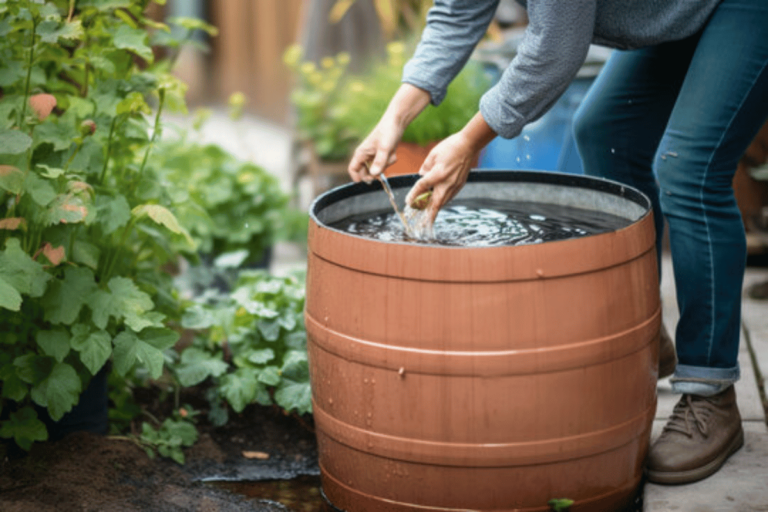Advantages of Using Rainwater
Rainwater harvesting entails receiving and saving rainwater for use in your
garden. Many advantages come with this sustainable practice, including reduced
water usage, money savings, and better plant health. Replacing tap water with
rainwater enables you to lessen reliance on municipal supplies and thereby
lower your water costs.
Water Conservation and Cost Savings
Rainwater harvesting considerably reduces the amount of drinking water
employed in irrigation, conserving a valuable resource. This practice is beneficial
in areas where there are water restrictions or droughts. Lower water bills can
be achieved by harvesting rain and lessening your environmental impact.
Example: During peak summer months, a single rain barrel may save up to
1,300 gallons of water, reducing demand from the public supply system.
Better Crop Health
Tap-water-free soft rain is all plants need to grow healthy without
suffering soil or any other adverse effects that can stunt their lives. It also
contains no chlorine or fluoride, compared to chlorinated tap waters, when they
have neutral pH and minerals that help promote plant growth.
Example: Plants moistened with rain generally show more vigour than those using
chlorinated tap waters.
Environmental Advantages
Stormwater runoff could be simplified by collecting and utilizing the stored
rainfall, thus avoiding erosion, flooding and pollution. It follows that
through this technique, storm events become less severe, enabling the
environment to be self-reliant. Moreover, storing rainfall can be an
alternative source of drinking for times when it doesn’t rain and during
droughts.
Example: A properly designed system for trapping rainwater collects it
during storms to reduce overflow pressure upon drainage systems later
How to Create Rain Barrels at Home
Among these steps are key components such as selecting an appropriate
collection area, which involves setting up a homemade collection container. The
roof on top of your house, garage or store is the best place to collect
rainwater. Ensure that the roof material is safe for harvesting water and that
the gutters and downspouts are in good condition.
Choose a Collection Area
Appropriate Surfaces: Metal roofs, tile, or untreated wood are some of the
roofs made with non-toxic materials. Unclogged gutters and functioning
downspouts ensure adequate water drainage into your storage system.
Decide on a Storage Container
Various Types: You can use rain barrels, cisterns or tanks to save up your
water. The small-scale collection often incorporates rain barrels connected to
downspouts, while larger volumes may call for the installation of cisterns or
tanks either above or below ground levels.
Example: Small gardens might do well with 55-gallon rain barrels, while
500-gallon cisterns would be more beneficial for more extensive gardens
Use a Diverter or Filter System
Purpose: Have a diverter/filter system that directs rainwater from the
downspout into the storage container; this helps remove debris such as leaves
and twigs, thus providing cleaner water collection stations.
Example: First flush diverters are designed to redirect initial dirty
rooftop runoff away from a tank using overflowing systems.
How to Connect Your Irrigation System
Ways: Hoses or pipes attach the storage container to your garden irrigation
system. You can either have a gravity-fed system for simplicity’s sake or
install a pump that will help you increase water pressure. The bottom of the
container should have a faucet or some other fixture to easily access the water.
For instance, Using collected rainwater, plants can be effectively irrigated
by a gravity-fed drip irrigation system.
Maintenance regularly
Frequently clean gutters, filters, and storage containers in your rainwater
collection system. Look out for leaks and ensure everything is working correctly.
For example, Clean the gutters and filters occasionally after every couple
of months, mostly when they are blocked due to heavy rains, allowing better water
flow.
Conclusion
Setting up and maintaining a rainwater collection system enables you to
enjoy benefits such as sustainable water use and support for a healthy garden.
Rainwater harvesting promotes water conservation, reduces costs, and improves
plant health while mitigating environmental impacts like erosion and stormwater
runoff. This ecological practice of making your garden more resilient and
sustainable ensures continuous supply even during dry spells.
Explore More Gardening Tips and Ideas
Source: Rainy Season For Your Garden


